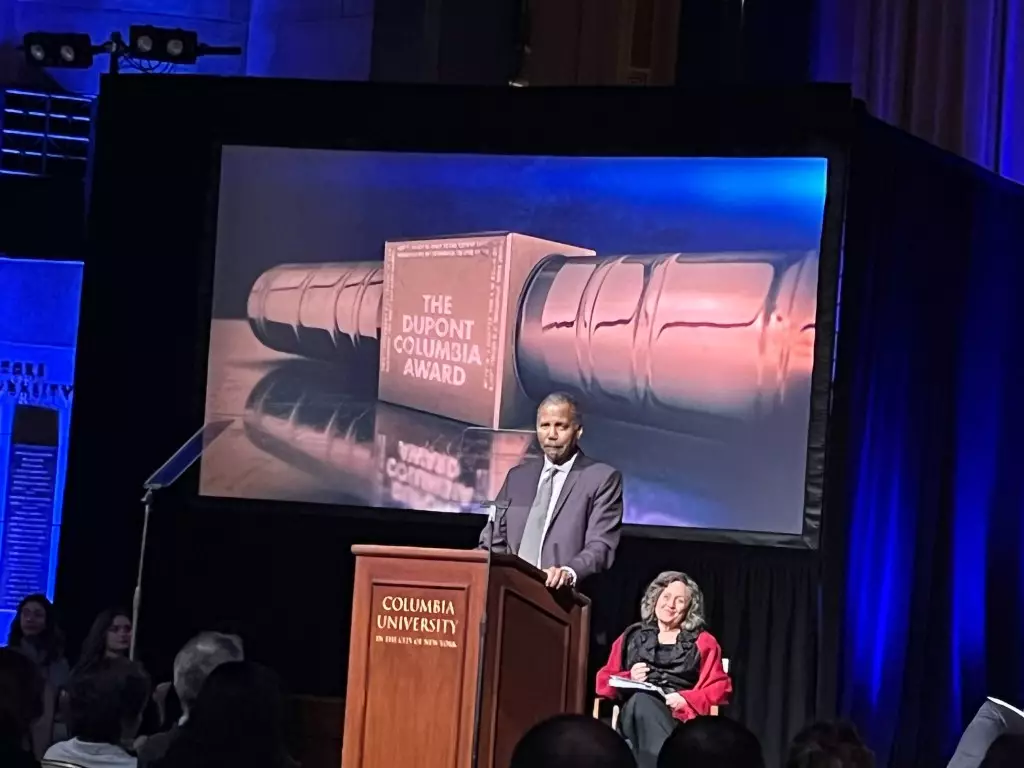The 2025 duPont-Columbia Awards made history as for the first time, three streaming platforms—Netflix, Max, and Paramount+—received accolades that are akin to the Pulitzer Prizes in the field of broadcasting. This significant recognition highlights a transformative shift within the media landscape, where traditional broadcasters are now sharing the stage with digital streaming giants. The ceremony took place at Columbia University’s prestigious Journalism School, which celebrated excellence in journalism across various formats, with an unprecedented 16 winners announced.
The sweeping recognition of these emerging platforms indicates an evolving understanding of journalism in the digital age. In an era characterized by rapid technological advancements and shifting viewer preferences, streaming services have increasingly invested in documentaries, investigative reports, and series that tackle pressing social issues. For instance, notable winners like “Murder in Boston” and “Birthing a Nation: The Resistance of Mary Gaffney” not only entertained audiences but also engaged them in vital conversations around race and historical truths in America. This shift denotes a breaking away from traditional storytelling norms, where narratives are often streamlined to cater to mass audiences.
Traditionally revered journalistic stalwarts like Frontline, CNN, and 60 Minutes might have found themselves overlooked this year, signaling a changing of the guard in how stories are told and consumed. Such a trend prompts critical discourse on the role and weight of traditional journalism versus that of streaming platforms which, while still nascent in the realm of accolades, have evidently made significant strides in quality content production.
Amidst this celebratory occasion, the prevailing sentiment was one of caution and introspection regarding the state of journalism today. As political tensions rise under a new administration and challenges to press freedom persist, figures like Bill Whitaker of 60 Minutes emphasized the “fraught” environment journalists now operate within. His remarks serve as a poignant reminder of the dangers journalists face globally, particularly in light of the Committee to Protect Journalists classifying this time as one of the most lethal periods for reporters. Whitaker’s call to action resonates deeply within the profession, urging journalists to continue their mission of integrity, truth, and the unearthing of hidden narratives.
The hesitance to directly mention political figures during acceptance speeches during the event reflects a broader strategy within journalism—to maintain a degree of neutrality even when the stakes are high. Inskeep’s insightful commentary on skepticism around media portrays a precarious relationship between the press and the public, with journalists tasked not only with reporting but also with rebuilding trust within fractured communities. The challenge now lies not just in delivering news but in engaging with an audience that may be indifferent or resistant to mainstream narratives.
Among the awards presented, there was a clear inclination towards content that addresses various aspects of race and social justice. Five Silver Batons were awarded to projects that delved deeply into America’s historical and contemporary issues concerning race, indicating that this theme remains at the forefront of journalistic inquiry. The presence of projects such as “The Wrong Man” and “40 Acres and a Lie” emphasizes the importance of recounting untold stories and unearthing systemic injustices that continue to reverberate within society.
Winners hailed from diverse sectors, including local news outlets and non-profit organizations, underscoring a growing recognition of grassroots journalism. This multi-faceted approach not only highlights varied storytelling methodologies but also broadens the spectrum of voices contributing to important dialogues in society. By integrating perspectives from local newsrooms alongside major streaming platforms, the landscape of journalism is becoming richer and more inclusive.
Looking ahead, the duPont-Columbia Awards herald a new chapter in the partnerships between journalism and streaming services. With the latter continuously topping charts in content production, the established news networks need to rethink their strategies, potentially adopting models that blend traditional journalism with the storytelling prowess of streaming platforms. As media consumption habits evolve, the relationship between audience and journalist will likely shift further, prompting a reconsideration of how news is delivered, consumed, and perceived.
The recognition of both established news entities and innovative streaming services at the 2025 duPont-Columbia Awards serves as a powerful reminder of journalism’s resilience and adaptability. As the challenges intensify, the necessity for integrity and nuanced storytelling becomes all the more crucial, urging a recommitment to responsible journalism that is reflective, inclusive, and above all, truthful. The road may be fraught with challenges, but the ongoing quest for truth and justice remains a steadfast pursuit.

